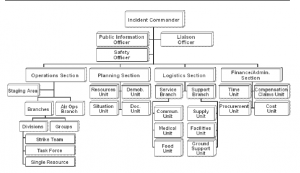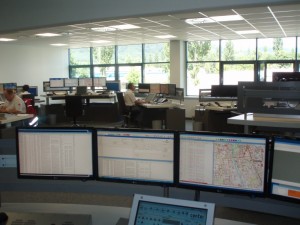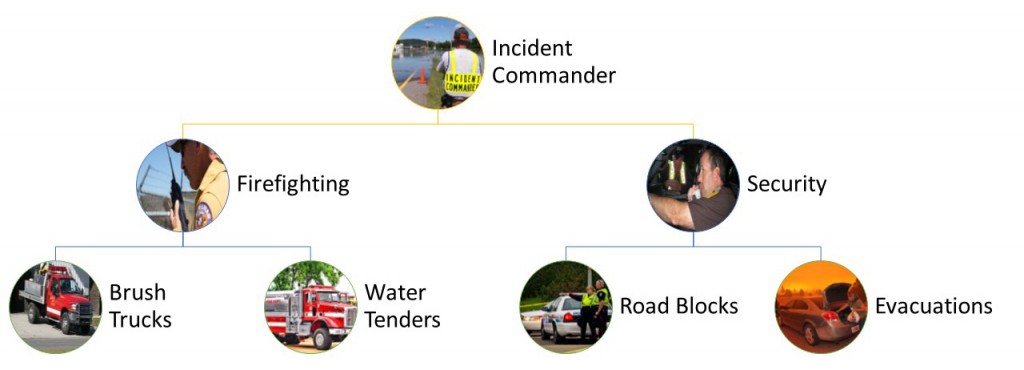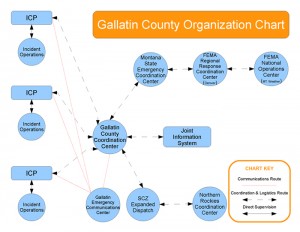The Bad Day
When someone has a bad day and needs help someone calls 911 to help resolve the situation and this starts the ball rolling.
Someone Dials 911
When that 911 call is placed many things take place behind the scenes with your phone company. First, your call gets routed to the appropriate 911 center that covers your area. With land line telephones, this is pretty simple and reliable. With cellular (and internet phones) this can be a little hit and miss on accuracy and sometimes the calls go to the wrong place and have to be transferred to the appropriate place. A variety of information is also passed to the 911 center when the call is placed. This typically will include the phone number and address/ geographic coordinate of the caller. It is important to know that this information is only available when someone dials 911.
In the 911 center, special alerts activate when a 911 call is received until the call is answered. When a dispatcher answers the call their computer screen will display the caller information (from above) and show their location on a computerized map screen. The dispatcher will then ask specific questions of the caller which don’t always make sense. They will always ask the phone number and location of the caller first thing. This may seem odd, however this is a national practice to ensure the phone number and location is correct in case the caller gets disconnected. The dispatcher will then follow computerized prompts (for most types of calls) with specific questions based on the type of incident occurring.
Once enough information is known to send the right resources (nature of call and location), the 911 center’s Computer Aided Dispatch (CAD) system will automatically dispatch the appropriate resources (police, fire, medical) while the dispatcher continues to obtain more information from the caller. It often seems like a lot of questions to the caller when they just want someone to come help, however they are very specific questions to ensure that we are sending the right resources to help. The updated information obtained from the caller by the dispatcher will be passed to the emergency responders while they are enroute to the incident.
Responders Arrive
When the first responders arrive on scene they will conduct what is known as a scene size up. In this size up they describe to the dispatcher exactly where they are, what they have happening, what their plan is to start mitigating the situation, initial instructions to others, additional resource requests, and establish an Incident Commander (IC). The IC is the person in charge who is calling the shots. In some cases there may be two people in charge (i.e. police and fire) which we would call Unified Command.
Routinely on larger events it may take a while to get enough resources on scene to mitigate the incident. To deal with this the IC will typically triage what they can do with the available resources to make the most difference in mitigating the incident. Sometimes this process looks like nothing is being done to the public, while in reality they are not wasting resources where they will do no good. For example, if you have two brush truck that would run out of water before getting around the wildfire, while it might look good to jump right in and spray water, in reality it would have no actual benefit. Instead the IC may wait until they have enough trucks to actually catch it, or to implement another tactic that will stop the fire.
The IC will continue to manage the incident from what is known as the Incident Command Post with the support personnel they deem necessary. The majority of incidents will be mitigated relatively quickly within several hours. However some incidents, which we call Extended Incident, will continue for some time.
Extended Incidents
 When an incident goes beyond the initial response, other factors come into play. The Incident Commander will typically have to take into other considerations such as replacement and/ or rotation of emergency personnel on the incident to maintain their operations. These incidents typically last between 1-3 days and require more support. The IC will often starting filling additional roles in the Incident Command System to meet these additional needs. The big one that often gets filled quickly is the Logistics Section which will address items such as food, lodging, supplies, and more. ICS Sections such as Planning and Finance will usually be filled to help provide structure and accountability for the incident. The IC and the positions they have filled in the ICS structure will continue to manage the incident until it is mitigated or becomes too large/ complex to manage at this level.
When an incident goes beyond the initial response, other factors come into play. The Incident Commander will typically have to take into other considerations such as replacement and/ or rotation of emergency personnel on the incident to maintain their operations. These incidents typically last between 1-3 days and require more support. The IC will often starting filling additional roles in the Incident Command System to meet these additional needs. The big one that often gets filled quickly is the Logistics Section which will address items such as food, lodging, supplies, and more. ICS Sections such as Planning and Finance will usually be filled to help provide structure and accountability for the incident. The IC and the positions they have filled in the ICS structure will continue to manage the incident until it is mitigated or becomes too large/ complex to manage at this level.
Emergencies and Disasters
When an incident continues to grow in size, or multiple events are occurring, then we start entering what is defined by Montana Code Annotated as an Emergency or Disaster. At this point our system is overloaded requiring a higher lever of resources, coordination and logistical support. When this occurs we can activate what is known as the Gallatin County Coordination Center. The Coordination Center is responsible for providing support (coordination, logistical, public information, etc…) to the Incident Command Posts out in the field. The Coordination Center will provide coordination within the county on the current situation and resources needs, as well as with the State of Montana. This is also the facility where our community’s elected officials and agency executives meet as the Policy Group. The Policy Group meets to make collective decisions on policy and scarce resource allocation. When this level of activity is taking place, decisions such as declaring an emergency or disaster must also be made along with whether to levy an emergency millage.
After an Incident
After an incident is over, life must get back to normal at some point. Sometimes there is nothing to it other than a memory, while other times individuals have to work with their insurance provider to address their losses. Sometimes in really large events this will require working with the Federal Emergency Management Agency (FEMA) on their recovery programs known as Individual Assistance and Public Assistance.



